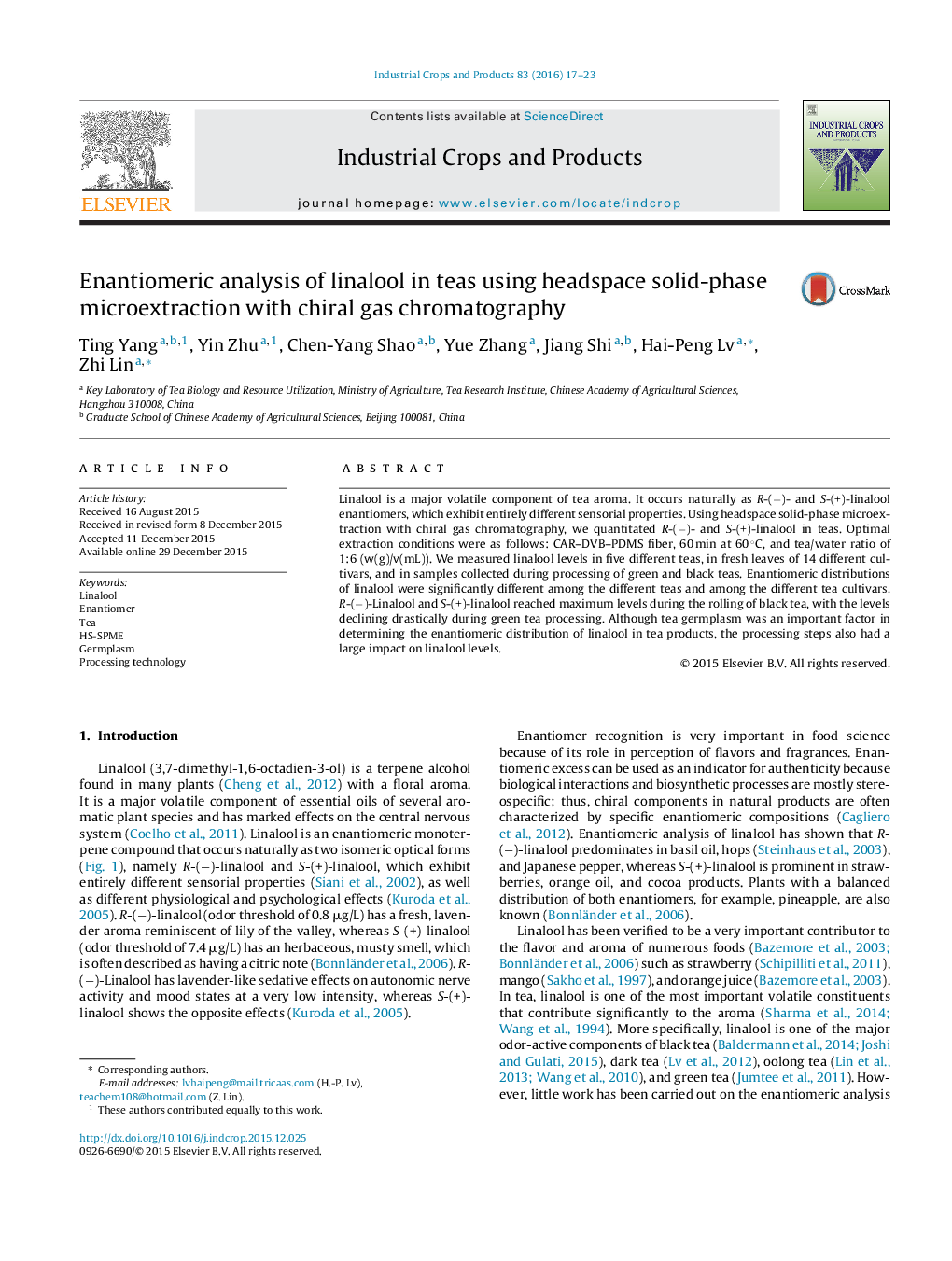| کد مقاله | کد نشریه | سال انتشار | مقاله انگلیسی | نسخه تمام متن |
|---|---|---|---|---|
| 4512291 | 1624827 | 2016 | 7 صفحه PDF | دانلود رایگان |
• An approach using HS-SPME–GC is studied for enantiomeric analysis of linalool in teas.
• Wide variation of enantiomeric distribution of linalool was observed in different teas.
• Tea germplasm is an important factor affecting the levels of linalool in tea.
• Tea processing technology has significant impacts on the levels of linalool.
Linalool is a major volatile component of tea aroma. It occurs naturally as R-(−)- and S-(+)-linalool enantiomers, which exhibit entirely different sensorial properties. Using headspace solid-phase microextraction with chiral gas chromatography, we quantitated R-(−)- and S-(+)-linalool in teas. Optimal extraction conditions were as follows: CAR–DVB–PDMS fiber, 60 min at 60 °C, and tea/water ratio of 1:6 (w(g)/v(mL)). We measured linalool levels in five different teas, in fresh leaves of 14 different cultivars, and in samples collected during processing of green and black teas. Enantiomeric distributions of linalool were significantly different among the different teas and among the different tea cultivars. R-(−)-Linalool and S-(+)-linalool reached maximum levels during the rolling of black tea, with the levels declining drastically during green tea processing. Although tea germplasm was an important factor in determining the enantiomeric distribution of linalool in tea products, the processing steps also had a large impact on linalool levels.
Journal: Industrial Crops and Products - Volume 83, May 2016, Pages 17–23
